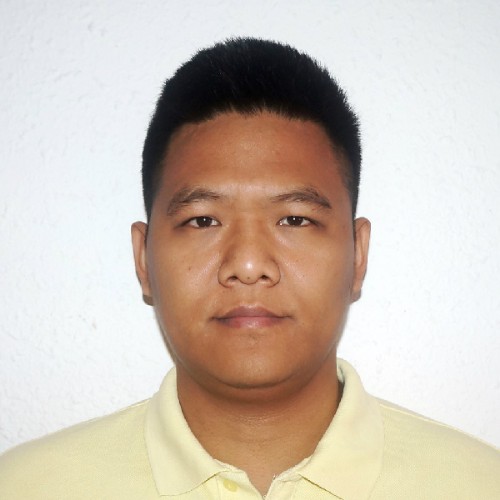July 1, 2025
Notification of New Headship (Prof Y.P Khasa) in the Department of Microbiology for a period of 3 years.
June 18, 2025
Advertisement for Project Technical Support-III position in an ICMR funded project on ad-hoc basis for a period of 6 months in the Laboratory of Dr. Ram Karan
June 17, 2025
M.Sc Microbiology Allocation-cum-allocation has started. Click here for schedule. Please regularly visit admission page for latest update
June 2, 2025
List of shortlisted candidates for Ph.D admission 2024-25 Phase II
May 27, 2025
List of Ad-hoc Panel for appointment of Assistant Professor in the Department of Microbiology for the various colleges of University of Delhi. Click here
May 23, 2025
Webinar will on CUET-PG 2025 admission on 28th May 2025, 3pm, livestream at youtube.com/UnivofDelhi For More details about admission Click here
May 16, 2025
Common Seat Allocation System (CSAS) Postgraduate (PG) - 2025 is open
Registration for CSAS-PG for admission to M.Sc in Microbiology is now open, last date is June 6, 2025 Click here for registration
For more information Click here
May 6, 2025
Application for Ad-hoc Panel Application are invited for preparation of Ad-hoc panel for appointment of Assistant Professor in the Department of Microbiology for the various colleges of University of Delhi.
Click here for Notification and application form
April 26, 2025
Phase II of Ph.D. Admission (2024-25) is now open
April 20, 2025
Seminar by Dr.Ullas S. Kolthur on 22 April 2025. 3.30pm S.P Jain Auditorium
March 24, 2025
Admission-related committees for the academic year 2025-26
March 4, 2025
Seminar by Dr. Manish Grover on 7th March, 2025
Jan 22, 2025
Seminar by Dr. Rajesh Kumari on 27th January, 2025
Jan 08, 2025
Information bulletin for PG admission 2025-26
Dec 31, 2024
Applicants shortlisted for admission to PhD program 2024-25
Dec 11, 2024
Regarding Ph.D Interview
The interview for admission to PhD Microbiology program for AY 2024-25 have been scheduled for 23-Dec-2024 (Monday) at 9:30AM. All applicants have been sent email with detailed instructions regarding the same. In case any applicant has any queries, they may contact Department by email to head@microbio.du.ac.in.
Dec 3, 2024
The registration date for Ph.D admission is extended till 10 December 2024
Nov 18, 2024
Date sheet for M.Sc Microbiology Semester I/III Examination 2024
Nov 13, 2024
Admission for the PhD program is now open. Click here for more details
Nov 13, 2024
Special seminar by Prof. Barry T Rouse at Biotech Seminar Hall, on 14th November, 2024, 11 am
Sept 1, 2024
Advertisement for Project Research Scientist-I position
Aug 19, 2024
Quotations are invited through e-procurement portal for tender under two bid system for supply and installation of "one Unit of “-80 freezer with 5 kVa Servo Stabilizer". (Tender Ref no Micro-SDC/2024/SS-01 , Tender ID: 2024_DU_821746_1). The last date for bid submission is 16th September 2024 by 05:00 PM. The details may be downloaded here.
July 19, 2024
Advertisement for 2 JRF position
June 22, 2024
M.Sc Microbiology admission schedule and Fee details
First round of M.Sc Microbiology admission seat allocation is now available in the candidate's portal. Candidate are requested to accept the allocated seat before June 26, 2024, 4.59pm.
June 14, 2024
Supplementary Ad-hoc Guest Faculty Panel Microbiology 2024-25
June 3, 2024
Ad-hoc Guest Faculty Panel Microbiology 2024-25
Click here for the list of Guest Faculty Panel (Microbiology) 2024-25
May 15, 2024
Application for Ad-hoc Panel
Application are invited for preparation of Ad-hoc panel for appointment of Assistant Professor in the Department of Microbiology for the various colleges of University of Delhi.
Click here for Notification and application form
April 30, 2024
FAQ related to admission for M.Sc Microbiology 2024-25
April 29, 2024
Corrigendum for Seat Matrix for M.Sc Microbiology programme admission 2024-25
April 26, 2024
Registration for admission to Postgraduate course is now open. Click here
April 14, 2024
Advertisement of positions in ICMR funded project
April 10, 2024
Advertisement for Project Assistant I post in SERB funded project.
April 4, 2024
Departmental seminar (Guest talk) by Dr. Nem Singh (Research Professor)
March 21, 2024
Advertisement for JRF position in a DBT funded project.
March 7, 2024
Advertisement for Technical Officer post in BioNEST-UDSC
Feb 14, 2024
Advertisement for position in ICMR funded project.
Jan 23, 2024
Admission committee for the academic Year 2024-2025
Jan 13, 2024
Ph.D Phase II Admission list
Dec 29, 2023
Registration for Ph.D admission Phase II is extended till Dec 31, 2023
Dec 6, 2023
Registration for Ph.D admission phase II is now open
Dec 5, 2023
Global Bio-India Dec 4 -6 2023
Nov 8, 2023
MicroZest Day celebration
Sept 27, 2023
Advertisement for CEO position at BioNEST
Sept 15, 2023
Advertisement for JRF position in a DBT funded project.
Aug 29, 2023
Dr. Ram Karan has joined the department as Assoicate Professor. We Congratulate and Welcome him in the Department of Microbiology.
Aug 21, 2023
Notice regarding PG admission CSAS 2023
Aug 20,2023
Revised schedule for CSAS-PG
Aug 14, 2023
Notice for Ph.D Candidate Interview Click here
Aug 11, 2023
Dr. Ashwini Chauhan has joined the department as Associate Professor. We Congratulate and Welcome him in the Department of Microbiology.
Aug 10, 2023
Notice: Extension of Registration and Provision of Correction Window in CSAS (PG)-2023 until August 14, 2023
Aug 9, 2023
Inviting Online Applications for Ph.D. Entrance Test for DU, JNU, BHU and BBAU - 2023. Click here for details
July 28, 2023
CSAS (PG) 2023 for admission to M.Sc Microbiology is now open. Candidates are requested to read the CSAS(PG) doucment carefully before applying. Click here for details
July 12, 2023
Registration for Ph.D admission is now open. Click here for details.
June 19, 2023
Advertisement for JRF position (01) under ICMR-Extramural Adhoc-BMS funded project. Details can be downloaded here
June 13, 2023
List of ad-hoc/ Guest faculty panel for Microbiology for 2023-24. In case of any discrepancy, the applicant may contact the Department within 10 days of publication. The details can be downloaded here
